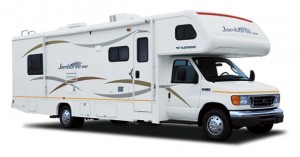Another book value bargain: Coast Distribution Systems Inc. (CRV)
I have spoken highly in the past of a stock selling for less than its net working capital with the additional criterion that the firm be profitable. On top of the attractiveness of the stock recovering at least to its asset value, the net working capital level serves as a price floor, thus reducing the risk of holding the company. As a result, the investor should be theoretically able to lower their required return on capital to go with the reduced risk, since a risk-free investment that can beat the risk-free rate is in a theoretical sense just as good as an ordinary equity investment that beats the ordinary return on equity.
Of course, I am skeptical of theoretical finance, but value investors agree that the way to make money from investing is simply to avoid losing it. And as a result, if the stock is already trading at or near its price floor and is profitable, the stock is at least a candidate for purchase. However it is normally a run of losses that depresses investor sentiment to the point where the stock is pushed towards or below its net working capital in the first place, so instead of currently profitable, potentially profitable would be a better test (of course, Key Tronic was always profitable, but it takes more than one stock to fill in a portfolio). When the company does return to profitability, the price should appreciate to bring return on assets in line with asset prices.
 For example, Coast Distribution Systems (CRV) is a wholesaler of replacement parts for recreational vehicles and boats, and naturally with the slowing economy interest in boating and recreation has gone down. On the one hand, boats and recreational vehicles are expensive and it is more likely that owners keep their existing vehicles going longer, but on the other hand they might be abandoning this expensive hobby entirely, and even if they did not sales of new boats and RVs are going to be depressed, which will affect the market for parts for some time.
For example, Coast Distribution Systems (CRV) is a wholesaler of replacement parts for recreational vehicles and boats, and naturally with the slowing economy interest in boating and recreation has gone down. On the one hand, boats and recreational vehicles are expensive and it is more likely that owners keep their existing vehicles going longer, but on the other hand they might be abandoning this expensive hobby entirely, and even if they did not sales of new boats and RVs are going to be depressed, which will affect the market for parts for some time.
However, CRV has adapted to this situation by dramatically cutting their operating expenses, from around $27 million a year in previous years to $20.1 million in the last four quarters, and a mere $4.7 million in the last quarter reported. Of course, there is a limit to how far costs can be cut, but the firm has been profitable for the last two quarters as a result, despite sales dropping by nearly half since 2006. So, if the firm does find its feet again on its present operating scale, as it appears to be doing, there should be no little further erosion of the stockholder’s equity.
And the equity itself, according to the balance sheet, is $30.6 million against a current market cap of $17.4 million. Furthermore, the current assets, cash, receivables, and inventory, count for all but $5 million of this amount, so even if there is some erosion of current asset values the stock is selling for below the stock’s theoretical minimum value, so there is ample room for appreciation.
So, again, stocks with a built-in asset value floor that is higher than the current stock price are a good idea if they are now, or can be expected to be profitable under reasonable, not particularly optimistic assumptions.
Leave a Reply